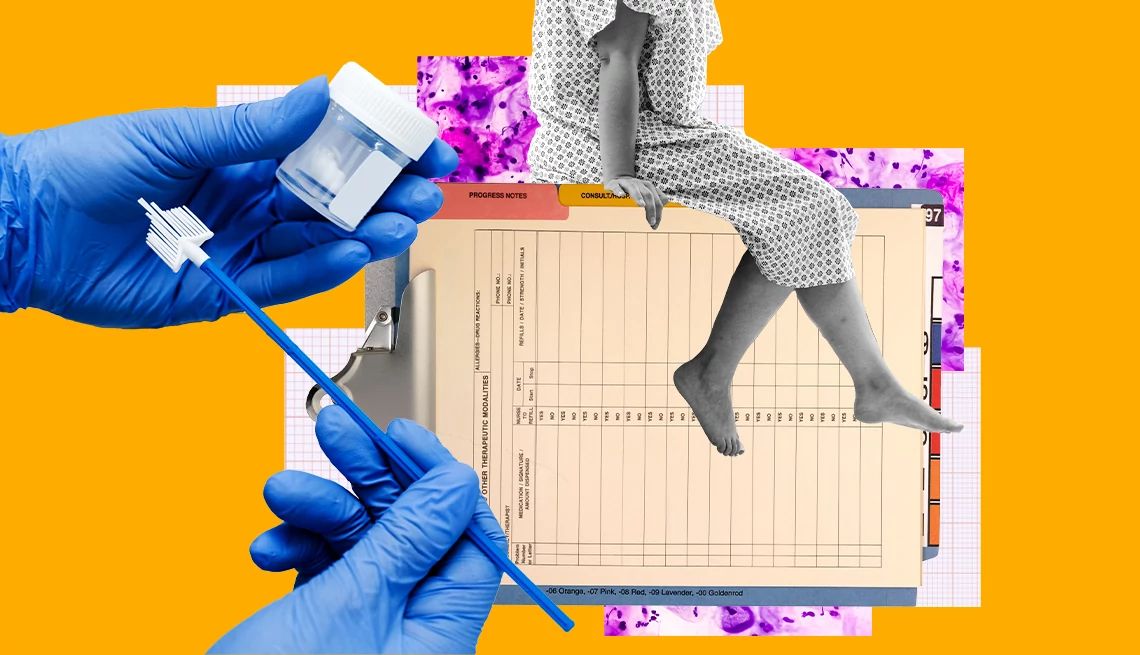AARP Hearing Center


Many women stop screening for cervical cancer at 65 because they assume they are no longer at risk. But experts say that’s not always the case, and that some older women could benefit from continued screenings.
In fact, 25 percent of cervical cancer diagnoses occur in women over the age of 65, and cervical cancers diagnosed in this age group tend to be more advanced than those found in younger women, making them more difficult to treat. Rebecca Perkins, M.D., a professor of obstetrics and gynecology at Tufts University School of Medicine, says most women diagnosed with cervical cancer haven’t been screened recently.
Although age 65 is often seen as a stopping point for cervical cancer screening, national guidelines from groups such as the American Cancer Society say that women must meet several criteria before safely discontinuing screening.
These criteria include documentation of adequate screening for the past 10 years and no history of cervical cancer or precancer in the past 25 years. Perkins says women who are being followed for abnormal screening results should continue being examined past age 65 or as long as their doctors recommend. Women with weakened immune systems may also need additional testing, Perkins adds.
The society defines adequate screening as documentation of two negative HPV tests or three negative Pap tests within the past decade, with the most recent test performed within the past five years. While HPV tests can detect infections with the virus that causes most cervical cancers, Pap tests collect cells from the cervix and can detect cancers and precancers.
“That is a lot of tests to pass before exiting screening,” Perkins says.
Only 1 in 3 women ages 64 to 66 meet these criteria, meaning that two-thirds of women who stop screening at 65 may still be at risk for cervical cancer, Perkins says. Women who stop screening without meeting the criteria by age 65 are twice as likely to develop cervical cancer before age 85 compared to women who are adequately screened.
In some cases, women don’t meet the criteria to stop cervical cancer screening because they haven’t had a pelvic exam in many years. In other cases, their medical records don’t document that these exams occurred, sometimes because women have changed health plans in the past decade and their doctors can’t access their previous electronic record system, Perkins says.
“On average, people stay in the same health system or insurance provider only three to four years,” Perkins says. “If you have a screening interval of five years, it’s easier for people to get lost.”
Cervical cancer was often assumed to be a disease of younger women because many post-menopausal women had hysterectomies that removed the cervix, Perkins says. However, fewer women are undergoing hysterectomies these days; others are eligible for hysterectomies that remove the uterus but leave the cervix intact, Perkins says.
The American Cancer Society estimates that 13,360 new cases of cervical cancer will be diagnosed this year, along with 4,320 deaths from the disease. The average age of diagnosis for cervical cancer is 50.




































































More From AARP
What Can I Do About My Thinning Hair and Facial Hair?
A doctor's advice for women over 50 experiencing hair loss
Do You Need a Mammogram After 75?
Questions to ask your doctor about the important screening
Warning Signs of Uterine Cancer
Also called endometrial cancer, it's one of the few cancers on the rise in the U.S. — here's what you need to know